 By Pepper Parr
By Pepper Parr
July 6th, 2020
BURLINGTON, ON
If you don’t own a house or are not interested in upgrading your property and contributing to lower GHG emissions – take a pass on this story.
Have you heard of the Deep Energy Retrofit Program?
Few have.
Discussed at some length at council on Monday the report brought to the table some novel ideas that were enthusiastically endorsed by most council members.
Councillor Bentivegna wanted to know where the money to pay for it all was going to come from.
What is a Deep Energy Retrofit Program?
A deep energy retrofit program involves a systems approach to reduce carbon emissions from existing buildings, with a focus on those measures which will reduce and/or eliminate the use of fossil fuels as a source of energy. Typically, there is a hierarchy of measures which can be implemented:
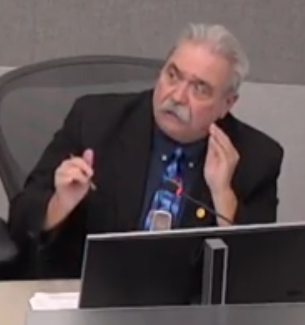
Ward 4 Councillor Angelo Bentivegna wanted to know who and how the xxx was going to be paid for. He didn’t get much of an answer
• Adding insulation
• Sealing air leaks
• Upgrading mechanical systems
• Replacing windows and/or doors
• Water efficiency upgrades
• Thermal controls
• Renewable energy
Depending on the work required, a full energy retrofit can cost up to $30,000. Retrofits can be more cost effective if timed with home renovations.
Now you know why Bentivegna wanted to know where those dollars were going to come from.
Council was more focused on how they were going to educate the public on the benefits and then how to take part in the program.
What they wanted most was to get on with it.
The Deep Energy Retrofit Program was a sort of next step once the city had declared a Climate Change emergency followed by a Climate Action plan.
Council was presented with a number of options in a report that was to be Received and Filed. This report however was not going to be placed on a shelf to gather dust.
Interestingly – Council also got a report on the 75th Burlington Hydro Anniversary. During the Deep Refit debate Burlington Hydro was pulled into how the program would roll out – it wasn’t what they were expecting.
The Hydro people may have logged out of the Zoom based meeting before the refitting of the residential structures was debated. City Manager Tim Commisso assured Council that both he and the Mayor site on the Hydro Board – they would be reminding that Board that the city owns the company.
Direct the Executive Director of Environment, Infrastructure and Community Services to continue to work with partners, stakeholders and municipalities listed in an environment, infrastructure and community services report and report back before the end of 2020 with final recommendations, including resources and actions required to implement a deep energy efficiency retrofit program for homes in Burlington.
Council didn’t want to wait that long.
Expect them to make a decision on a possible pilot program that will be made available to those citizens who are sold on the climate change issue and will be ready to put their money on the table.
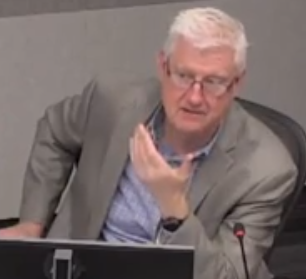
Councillor Sharman wants to see a list of reliable contractors.
Councillor Sharman told his sad story (several times actually) on his troubles getting a Backwater Valve set up in his home.
The Mayor reported that her Backwater Valve installation was a breeze and offered to help Sharman on his next upgrade.
The purpose of this report is to provide options to deliver a residential deep energy retrofit program in Burlington, a priority program area identified in the recently approved Climate Action Plan for Burlington.
This report provides a summary of the measures required to support the development of a Deep Energy Efficiency Retrofit Program for homes in Burlington, including the development of a community engagement plan, which would involve:
• Updating the city’s Environment webpage with information;
• Supporting the Bay Area Climate Change Council (BACCC) to develop a home energy efficiency retrofit accelerator program;
• Working with BACCC and the Clean Air Partnership to engage the business sector (contractors, trades and retailers);
• Working with the Burlington Climate Action Plan community stakeholders, such as Enbridge, to promote specific measures to improve home energy efficiency;
• Co-promote related actions such as home resiliency measures and electric cars, bikes and equipment.
• Pursue partnerships to develop a demonstration centre to promote home efficiency and resiliency measures.
That didn’t really convey what this council wants to do. In that regard the report was on the weak side.
In April of this year Council approved the Climate Action Plan.
At that time they Direct(ed) the Executive Director of Environment, Infrastructure and Community Services to report back in Q2 2020 after the release of the federal budget with the latest information and updated proposed timelines for the home energy retrofit program and human resource requirements to meet the goals of the climate action plan.
Problem was – the federal government didn’t release a budget. It got consumed with the economic and social fallout of the COVID19 virus that was wreaking havoc across the country – we were all suddenly in various stages of a lockdown that the public was having difficulty coping with and complying with as well.
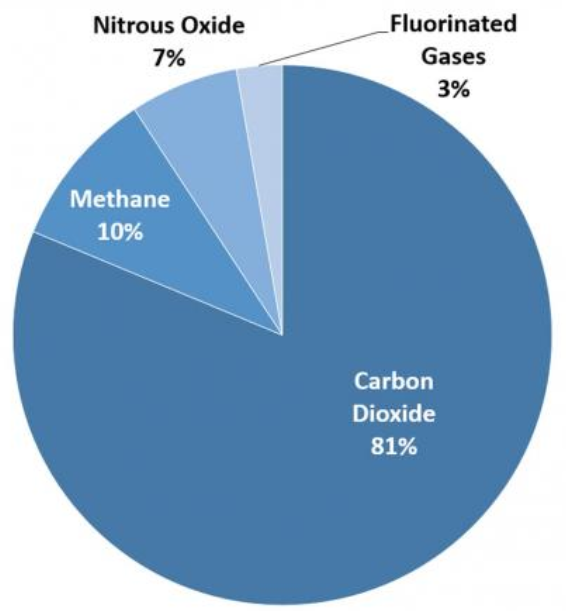
These are 2018 numbers – the carbon dioxide must be reduced.
The Deep Energy Retrofit Program was seen as a way to get something going economically and put a decent dent in the GHG that we put into the environment.
It is estimated in the Climate Action Plan for Burlington that 21,300 person years of employment will be created in total if the low carbon scenario pathway is followed to 2050, with 5,600 of those person years in the renewable energy market.
Municipalities benefit from the implementation of a home energy retrofit program through greenhouse gas emission reductions to help meeting community targets, improved reputation as an environmentally progressive community, reduced pressure on energy infrastructure and reduced air pollution.
In 2016, Burlington households, businesses and institutions spent $700 million on energy (fuel and electricity). As noted in the Climate Action Plan for Burlington, the local carbon scenario can reduce this amount by 36% or $270 million, energy saving dollars that can be invested back into the local community.
Homeowners benefit from a home energy efficiency retrofit by mitigating future energy cost increases; achieving a healthier and comfortable home; increasing property value; and improving resiliency to power outages and extreme temperatures.
The optics of a program like this for the current city council are wonderful – they love this one. Making it happen is much much easier said than done,
The report says: Developing a comprehensive building energy retrofit program is not easy – if it was, there would be more programs in existence in Ontario than just Toronto given that Ontario municipalities have had the authority to use Local Improvement Charges (LICs) as a means of financing since 2012. Developing and delivering a program requires funding and staff time to administer applications, agreements, and deal with legal and financing issues. The residential home sector is challenging to target as it is disbursed and varies by demographics, home condition, type and age, household incomes, etc.
Successful uptake is challenging – a comprehensive marketing program is required.
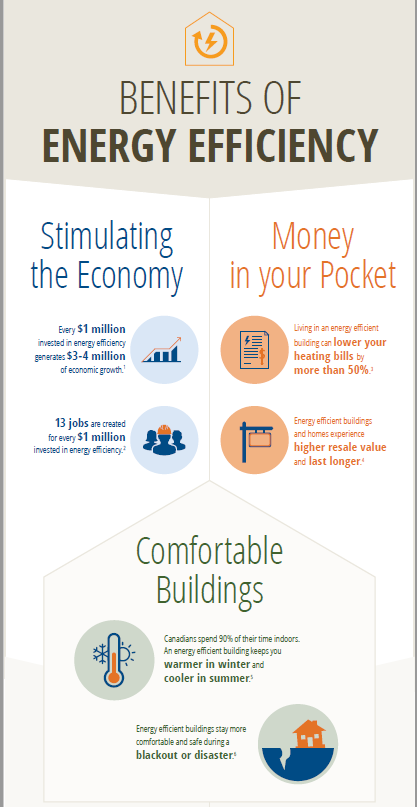 From a property owner perspective, the process can been seen as challenging both from technical knowledge and implementation. Very few people really want to manage contractors for renovations – different contractors are required for insulation and air sealing, mechanicals, windows, EV chargers and renewable energy. Addressing the building envelope upgrades and fuel switching to low carbon fuel requires a longer term for a financial pay back which is made even more challenging with the relatively low cost of natural gas as a source of energy.
From a property owner perspective, the process can been seen as challenging both from technical knowledge and implementation. Very few people really want to manage contractors for renovations – different contractors are required for insulation and air sealing, mechanicals, windows, EV chargers and renewable energy. Addressing the building envelope upgrades and fuel switching to low carbon fuel requires a longer term for a financial pay back which is made even more challenging with the relatively low cost of natural gas as a source of energy.
Lastly, the market expects rebates to be available as incentives, not financing.
Factors for a Home Energy Retrofit Program
There are many factors to consider when developing a home energy retrofit program, such as:
• Marketing plan to promote the benefits of energy retrofits and the program to homeowners
• Home energy audit assessment and report (and follow-up after efficiency measures have been implemented)
• Contractor engagement (specifying upgrade works, selecting & managing contractors; completing improvements; verifying improvements)
Where the homeowner is seeking financing assistance:
• Development of an application pre-qualification process (own home, no tax arrears, etc.)
• Funding application process – review and approval
• Property owners agreement & financing schedule
• LIC repayment process
• Loan loss reserve fund – to cover loan defaults (based on other jurisdictions, this is a rare occurrence)
• Support to guide homeowners through the process (concierge approach)
Municipal Role for Promoting Home Energy Efficiency Retrofits
Municipalities can play a role in helping home owners understand what is meant by a deep energy retrofit and the specific energy efficiency measures involved in a retrofit. Similarly, an engagement program is necessary for trades, contractors and retailers on measures involved in a deep energy retrofit program so that the industry is aligned with this program.
Fortunately, the city can work with other entities and local municipalities on reaching out to these sectors. The Centre for Climate Change Management at Mohawk is working with the Bay Area Climate Change Council (BACCC) to create an Implementation Team which could pursue the development of a retrofit accelerator program, providing support to homeowners. BACCC also recognizes the need to reach out to trades and retailers to increase knowledge and skills in this area, hosting workshops and conferences. The Clean Air Partnership (CAP) is also working with local colleges and organizations to develop training and certification programs in this area. Both BACCC and CAP plan to develop one stop shop websites to support deep energy retrofit programs, with BACCC representing local resources for Hamilton and Burlington communities and CAP’s taking a provincial approach but linking to local websites.
Financing Alternatives for Implementing Home Energy Retrofits
As previously indicated, comprehensive home energy retrofits can be significant financial investment to property owners that have the benefit of increasing home value and decreasing on going energy costs over the long term. Options available for financing these improvements including utilizing own source funds or savings or borrowing through financial institutions including utilization of homeowner lines of credit or re financing mortgages for more significant projects that may be part of larger home renovations. Municipalities also have the ability to support financing deep energy retrofit programs by providing low interest loans to homeowners through the Local Improvement Charge (LIC) program on property tax bills.
Local Improvement Charges
LICs are special temporary charges that are added to a property tax bill to pay for improvements that benefit the property owners. Traditionally, these charges have been used in Ontario as a mechanism to recover the costs from affected properties for local block level infrastructure improvements (sidewalks, lighting, sewage projects, etc.).
The province amended the Municipal Act in 2012 to allow municipalities to enter into voluntary financing agreements with property owners who will benefit from the improvements. LICs are available to finance energy efficiency, renewable energy, and water conservation measures voluntarily carried out by individual property owners on their buildings. An LIC program provides homeowners with a loan to carry out these measures on their property. The homeowner pays for the measures and repays the loan through regular charges added to the property tax bills. The full cost of the program, including all associated administration costs and interest charges, are included in the loan or charged as a separate fee.
To date, the City of Toronto has been the only municipality in Ontario to implement an LIC program. In 2014, the City of Toronto launched two programs: HELP (home energy loan program) and Hi-RIS (high rise retrofit improvement support program for multi- residential buildings). As of June 2019, almost $14.9 million in financing has been committed to over 202 properties participating in the programs, reducing over 4,000 tonnes of carbon dioxide emissions. Under the HELP program specifically, $4.87 million in financing was issued to support 187 home retrofits (average loan of $22,000), resulting in a 30% reduction in home energy consumption and 28% reduction in greenhouse gas (GHG) emissions. Participants also pay an administration fee on top of the loan of 2%.
The Clean Air Partnership has completed a ‘Toolkit for Municipalities – Accelerating Home Energy Retrofits Through Local Improvement Charge Programs’ with the support of a number of municipalities in Ontario, including Burlington. The following description of LICs is based on the information provided in the toolkit.
A unique characteristic of LIC financing is that the loan is tied to the property and can be transferred to the new owner when the home is sold. LIC financing is one tool in the toolbox available to encourage residents to invest in energy efficiency retrofits.
Challenges to Utilizing LIC Financing Mechanism
The initial capital costs required to facilitate widespread adoption of retrofit projects through LIC programs are significant. Many municipalities are already struggling to fund programs, services, and infrastructure upgrades, particularly during the Covid crisis.
There has been concerns related to whether LIC loans adversely impact the municipal debt limit imposed on municipalities by the province; this is to be further explored. The debt recovery related to LICs are recovered from individual property owners and not through general revenue collection from property taxes
Mortgage lender approval can be difficult due to the priority lien status of local improvement charges. There is a very small, potential of a financial risk to financial institutions who are providing mortgages for a property with a LIC lien attached to it.
For municipalities, a loan loss reserve fund covered by the tax base may be required to manage the low risk of loan defaults. For example, staff have been advised that the State of California, with $3.6 billion in loans, set up a fund to cover defaults, yet no claims have been made since its establishment in 2014.
Options to Deliver a Home Energy Retrofit Financing Program
Two options are available to setting up a financing program to support homeowners interested in completing a home energy efficiency retrofit.

Guelph merged their hydro operation with Hamilton’s. Burlington is one of the few hydro operations that has not become part of the consolidation that is taking place in local hydro operations.
1. City Run Program:
Burlington could opt to develop its own residential energy retrofit program and follow the lead of other municipalities that have completed detailed feasibility studies and business cases utilizing funding from the Federation of Canadian Municipalities (FCM). As examples, the City of Windsor and Town of Newmarket each spent approximately $200,000 to complete feasibility studies. Windsor is planning to set up a separate arms-length municipal service corporation (Windsor’s recommended approach) with $400,000 as seed funding to hire a general manager and develop a business plan. Guelph has also set up a separate organization called Our Energy Guelph with an executive director and board of directors, with start-up funding acquired through the merger of Guelph Hydro with Alectra. Our Energy Guelph plans to focus their energy retrofit efforts on commercial and multi-residential properties. Burlington could pursue FCM funding to support a feasibility study to develop a local deep energy retrofit program.
2. 3rd Party Municipal Consortium Program:
Late in 2019, the Clean Air Partnership announced a consortium approach with the IESO (Independent Electricity System Operator), AMO (Association of Municipalities of Ontario), HRAI (Heating, Refrigeration and Air Conditioning Institute of Canada) and City of Toronto to serve as a 3rd party entity that would deliver on many of the above mentioned program actions in order to reduce the administrative burden home retrofit programs would have on municipalities. This approach would be able to achieve efficiencies of scale related to the start-up costs infrastructure investments required as part of these programs. There are four related objectives: 1) provide municipalities with a program that is flexible and adaptable to local circumstances and capacity; 2) provide customers with a simple, user-friendly program through a one-window service delivery model; 3) increase marketing and promotional opportunities in order to drive program uptake; and 4) achieve deep GHG emissions reductions through targeting old buildings for deep energy retrofits.
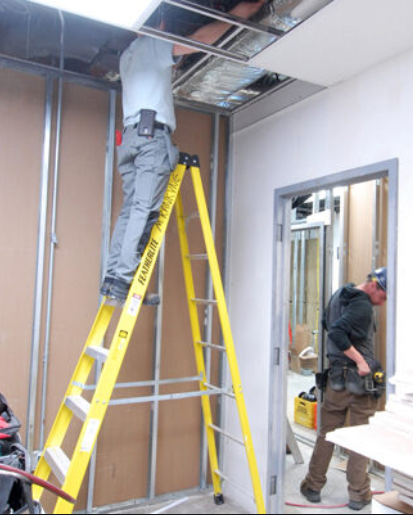
Finding the trades to do the work is one task – finding reliable, proven tradesman is a problem Councillor Sharman worries about – he would like to see Burlington Hydro involved in some of the trades vetting.
Next Steps to Develop a Home Energy Efficiency Retrofit Program Community Engagement Plan and Activities:
The following actions are recommended to build the knowledge and skills in the local community to support home energy efficiency retrofits, which can be implemented within the year. Due to Covid, creative approaches may be required in the shorter term to engage the various sectors online versus in person events. Staff will develop a community engagement plan to support home energy efficiency retrofits in the community, coordinating this work with local partners in this area, including:
1. Updating the city’s Environment webpage with additional information and links to support home energy efficiency retrofits. For example, the City of Toronto has developed a comprehensive website to promote energy efficient building measures – www.betterhomesTO.ca, supported by Natural Resources Canada, Toronto Hydro and Enbridge provides a great one stop shop for this type of information. The city may not need to duplicate this work but provide links to existing pages such as this one.
2. Continue to work with the Bay Area Climate Change Council and the Centre for Climate Change Management create a business case to develop an accelerator program in the Bay Area to assist homeowners with the process of implementing home energy efficiency measures. This approach would help to overcome one of the barriers that homeowners have of hiring contractors to complete renovations. This concierge service could be implemented prior to the development of a full energy retrofit program and may complement the work of the Clean Air Partnership but be provided at a local level.
3. Work with the Bay Area Climate Change Council and Clean Air Partnership to engage and increase knowledge in the local business sector, representing contractors, trades and retailers on measures required to complete a deep energy retrofit on homes.
4. Work with the city’s own Climate Action Plan community stakeholders to promote measures that homeowners can implement to improve energy efficiency and reduce their carbon footprint. For example, Enbridge Gas and other local contractors have expressed interest in the installation of hybrid heat pumps along with leak sealing and smart energy controls to improve energy performance.
5. In addition to promoting home energy retrofit actions, consideration can also be given to support measures to improve home resiliency (flood proofing) and adoption of electric vehicles, e-bikes and e-equipment (lawn mowers, trimmers and leaf blowers).
6. Consider the creation of a demonstration project at an existing city facility where property owners could visit to learn about energy efficient and resiliency measures to improve local buildings and reduce greenhouse gas emissions. Local partnerships and sponsorships could be pursued to participate in this project.
Developing a Home Energy Efficiency Retrofit Financing Program:
It is recommended that staff pursue joining the 3rd party municipal consortium program led by CAP with AMO, the IESO, HRAI and City of Toronto to develop and deliver a home energy retrofit program in Burlington. Joining the consortium would ensure that Burlington has the necessary support and expertise to develop a comprehensive program and overcome some of the challenges listed above.
Benefits to participating would include:
• A wider Ontario marketing campaign will be coordinated to enable holistic and consistent messaging delivered to as wide an audience at the least cost.
• A team approach to promote the program to the Ontario contractor community.
• Generic marketing material will be created for each municipality to customize by adding logos to the standard templates.
• Partnerships with other stakeholders to market the program by identifying and acting on promotion opportunities and monitor uptake to inform future outreach efforts.
• Streamline process for municipal onboarding.
• City of Toronto will support with program delivery advice based on their experience.
• CAP is proposing to assume the role of a concierge, providing support to guide applicants through the different stages of the process, by:
o streamlining the program application and approval processes;
o providing objective guidance to customers re: contractor selection, costs, and management;
o providing market research on some of the key questions/issues from customers and creating resources/processes to address them; and,
o gathering and documenting feedback on program improvements/issues.
The program is being designed to reduce the resource burden, but municipalities will still be required to complete the following:
• Pass an LIC by-law through council
• Define eligible measures and financial verification requirements (part of by-law)
• Final approval/rejection of application/contract with property owner
• Set up the structure to attach the loan to the property tax system for repayment
• Manage the payments to homeowners once they are accepted into the program
• Identify possible avenues to support uptake of the program via municipal and/or community outreach and promotion opportunities (bottom-up marketing approaches)
The Staff report opted for a home energy retrofit program as the recommended priority action in the Climate Action Plan, approved by council earlier this year, following a comprehensive community engagement program. Finance and Communications staff were engaged on this report. Stakeholders and agencies engaged in this report included the Centre for Climate Change Management at Mohawk College, the Clean Air Partnership, QUEST and Enbridge Gas. Discussions continue to be ongoing with other local and regional municipalities including Oakville, Halton Hills, Guelph, Waterloo Region, London and Windsor, among others.
The ‘Toolkit for Municipalities – Accelerating Home Energy Retrofits Through Local Improvement Charge Programs’ (2020) and the ‘Local Improvement Charge Financing Pilot Program Design for Residential Buildings in Ontario’ (Dunsky Energy Consulting 2013) were used as reference materials.
Financial Matters:
A recent Debt Policy Review report described the city’s ability to borrow money and assume non-tax supported debt which is widely used to support infrastructure requirements of community groups, stakeholders and other community partners. Non-tax supported debt is repaid by user fees, surcharges or loans. In the example of a deep energy retrofit program, loans to property owners would be recovered through a local improvement charge mechanism as described earlier in the report. LICs have traditionally been classified as non-tax supported debt as per the city’s debt policy similar to the city’s historical use of the local improvement charge for new road amenities such as sidewalks and included within the city’s debt limits.
Total Financial Impact
As per the strategy described above, the parameters of a Burlington tailored program are still to be developed, this is largely dependent upon further discussions with the municipal consortium and continued discussions with neighboring municipalities.
There is a possibility of shared resources, however, additional work is required to determine overall structure of the program and corresponding financial impact. Details include financial and staff support required to administer the program as it relates to LIC loans, agreements, interest rates, payment schedules, etc. Staff will work internally with the Finance and Legal Departments to address these details, associated funding requirements, and participate in meetings with the consortium group to help define the final program. As an example, to support 200 home energy retrofits using an average of $22,000 per home, the amount required would be $4.4 million.
Source of Funding
Further discussions with the Finance Department are required to finalize the financial support required to effectively administer a deep energy retrofit program for homes in Burlington. As discussions continue with the municipal consortium program, further clarity around the program will become available. Staff will report back on details surrounding financing required to deliver the program in the fall 2020, along with other program details as described above
Preliminary information was released earlier this year regarding the $300 million Community Efficiency Financing program announced by the Federation of Canadian Municipalities (FCM) to help municipalities deliver energy efficient financing programs to the low rise residential sector. Funding is available through loans and grants.
Generally, FCM will provide a smaller percentage of the financing via grants. Municipal applicants must contribute 20% of the total amount of the application, which can be capital dollars to support home energy loans as well as in-kind contributions.
Burlington was ineligible for the first phase of funding as it was only open to those municipalities that had completed a feasibility study for a home energy retrofit program. The next round of funding through this program is expected to support municipalities wishing to complete a feasibility study to implement a deep energy retrofit program.
FCM has advised that the round of funding applicable to the consortium of municipalities working together to develop a deep energy retrofit program will be available in early 2021. Participating municipalities will submit individual but coordinated applications. The funding would provide capital dollars to support the implementation of a home energy retrofit program and may be issued in a combination of a loan and a grant. Burlington would need to be prepared to contribute 20% of the program budget, some of which can be an in-kind contribution. This will be reviewed and considered as part of the 2021 budget process.
In addition to the FCM Community Efficiency Fund, the federal government has not issued any information about zero interest loans to homeowners to support home energy retrofit programs. If the federal government does follow through with program, it may negate the need to apply for FCM funding and implement a LIC program, unless the funding flows through municipalities.
Other Resource Impacts
It is expected that an additional full-time employee will be required to help support the delivery of a home energy retrofit program in Burlington, including coordinating efforts with municipal departments to set up the LIC program. Additional responsibilities will include coordination with local partners, overseeing marketing, communications and outreach, engaging trades and contractors and looking for ongoing opportunities to drive uptake of the program. However, staff will continue to work with our local partners and other nearby local municipalities to identify measures where we may be able to share and maximize the coordination of resources.
Climate Implications
Implementation of a Deep Energy Retrofit Program is one of the priority program areas as identified in the Climate Action Plan to reduce emissions and meet the goal for the Burlington community to achieve net carbon neutrality by 2050. Based on the modelling completed by SSG (Sustainability Solutions Group) for the Climate Action Plan there is an opportunity to reduce over 1,400 kilo tonnes of equivalent carbon dioxide (ktCO2e) by implementing a residential deep energy retrofit program for existing residential buildings by 2050. In addition, over 2,600 ktCO2e can be reduced by installation of heat pumps (residential and commercial combined).
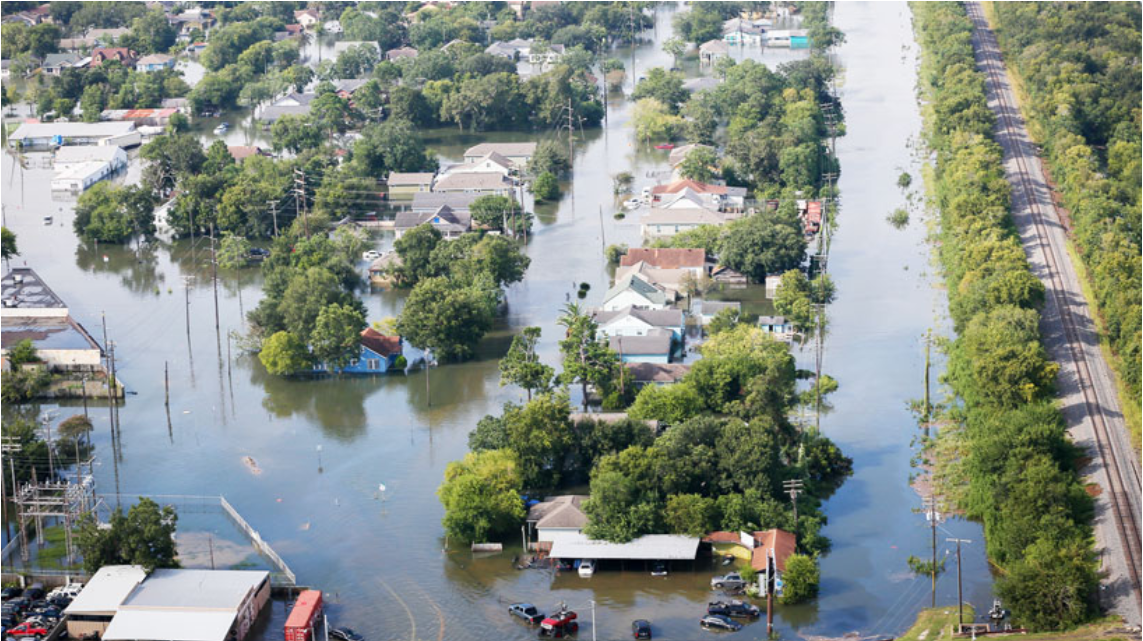
We see this all the time – it happened to us in 2014. It can be lessened – but someone has to begin to do something measurable. The current council has made this one of their defining programs.
Engagement Matters:
Staff will work with Communications and local partners/stakeholders to create a robust community engagement and marketing plan to promote the deep energy retrofit program, targeting homeowners as well as trades and contractors. Although a significant amount of promotion can occur online and through our community networks, additional funding may be required depending on some of the measures proposed in the plan.
The City of Burlington has set a target for the community to be net carbon zero by 2050. The development and implementation of a deep energy efficiency retrofit program for homes is necessary to achieve the low carbon scenario described in the Climate Action Plan for Burlington.


















